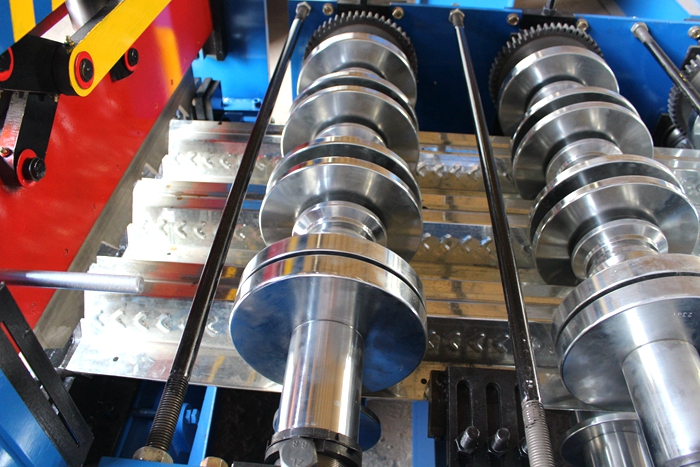Tailored Metal Roll Forming Solutions for Your Unique Needs and Specifications
The Art and Science of Custom Metal Roll Forming
In the modern industrial landscape, the need for custom solutions has never been more pronounced. One such innovation that has gained significant traction is custom metal roll forming. This advanced manufacturing process is essential for producing a wide array of metal components utilized in various industries, including automotive, construction, and aerospace. Understanding the intricacies of custom metal roll forming can help businesses make informed decisions about their manufacturing needs.
What is Custom Metal Roll Forming?
Custom metal roll forming is a continuous bending process in which a long strip of metal is passed through a series of rollers and progressively shaped into a desired cross-section. The process can accommodate various materials, including steel, aluminum, and stainless steel, allowing manufacturers to create components that meet specific design and functional requirements. Unlike traditional methods that may involve cutting and welding parts together, roll forming offers a streamlined approach that enhances efficiency and reduces waste.
Applications of Custom Metal Roll Forming
One of the primary benefits of custom metal roll forming is its versatility. The process can yield an impressive range of products, such as
1. Structural Components Many industries utilize roll-formed metal to create beams, channels, and angles that provide structural support in buildings and bridges. 2. Automotive Parts The automotive sector benefits significantly from roll forming to create components such as frames, brackets, and other critical elements that require high precision and strength.
3. Electrical and HVAC Elements Roll forming is widely used to produce electrical enclosures, ducts, and channel systems that form the backbone of modern electrical and heating, ventilation, and air conditioning systems.
4. Architectural Features Custom roll forming allows for the creation of decorative elements, such as trim, molding, and unique façade designs that enhance the aesthetic appeal of buildings.
The Advantages of Custom Metal Roll Forming
Custom metal roll forming offers several advantages over traditional fabrication methods
1. Efficiency The continuous nature of the roll forming process means that large quantities of parts can be produced quickly, reducing labor costs and increasing output.
2. Precision Roll forming provides exceptional dimensional accuracy, ensuring that the finished parts meet exact specifications. This precision is crucial in industries where tolerances are tight.
custom metal roll forming

3. Material Savings The process generates minimal waste compared to other methods. Because it utilizes a continuous strip of material, virtually every part of the raw material is transformed into a usable product.
4. Flexibility Custom solutions can be easily adapted to accommodate different designs, materials, and thicknesses, making roll forming an ideal choice for bespoke projects.
5. Strength and Durability Roll-formed components typically exhibit enhanced strength compared to stamped or cut parts due to the cold working of materials, which increases their yield strength.
The Roll Forming Process A Step-by-Step Overview
The roll forming process comprises several key stages
1. Material Selection The first step involves choosing the appropriate material based on the specific needs of the project, including considerations of strength, flexibility, and corrosion resistance.
2. Roll Design Engineers design the roll tooling based on the required final product. The tooling layout directly influences the shape and dimensions of the finished component.
3. Setup and Calibration The roll forming machine is set up with adequate alignment and calibration to ensure smooth production.
4. Forming Process The raw metal strip is fed into the machine and passed through a series of rollers that incrementally shape the material into its final form.
5. Cutting and Finishing After forming, the components may undergo additional procedures, such as cutting to length, surface finishing, and quality inspections to ensure they meet specifications.
Conclusion
Custom metal roll forming stands as a testament to the evolution of manufacturing techniques that prioritize efficiency, precision, and versatility. As industries continue to seek innovative approaches to optimize production and maintain quality, roll forming remains a pillar in custom fabrication. Understanding its principles and benefits can empower businesses to harness its potential effectively, driving progress and innovation in their respective fields. Whether for structural integrity, aesthetic appeal, or component functionality, custom metal roll forming is undeniably a key player in the future of manufacturing.
-
Roof Panel Machines: Buying Guide, Types, and PricingNewsJul.04, 2025
-
Purlin Machines: Types, Features, and Pricing GuideNewsJul.04, 2025
-
Metal Embossing Machines: Types, Applications, and Buying GuideNewsJul.04, 2025
-
Gutter Machines: Features, Types, and Cost BreakdownNewsJul.04, 2025
-
Cut to Length Line: Overview, Equipment, and Buying GuideNewsJul.04, 2025
-
Auto Stacker: Features, Applications, and Cost BreakdownNewsJul.04, 2025
-
Top Drywall Profile Machine Models for SaleNewsJun.05, 2025








